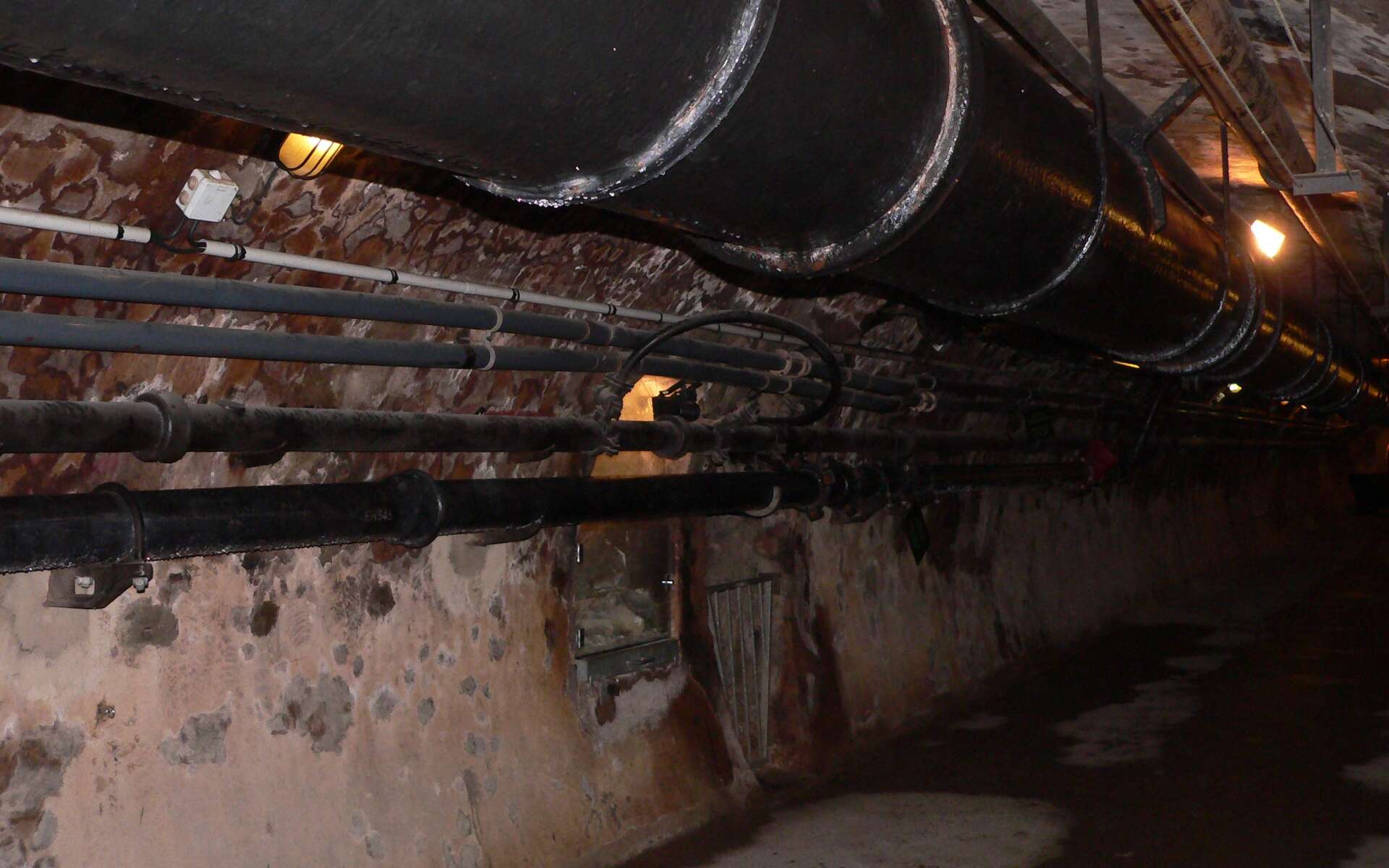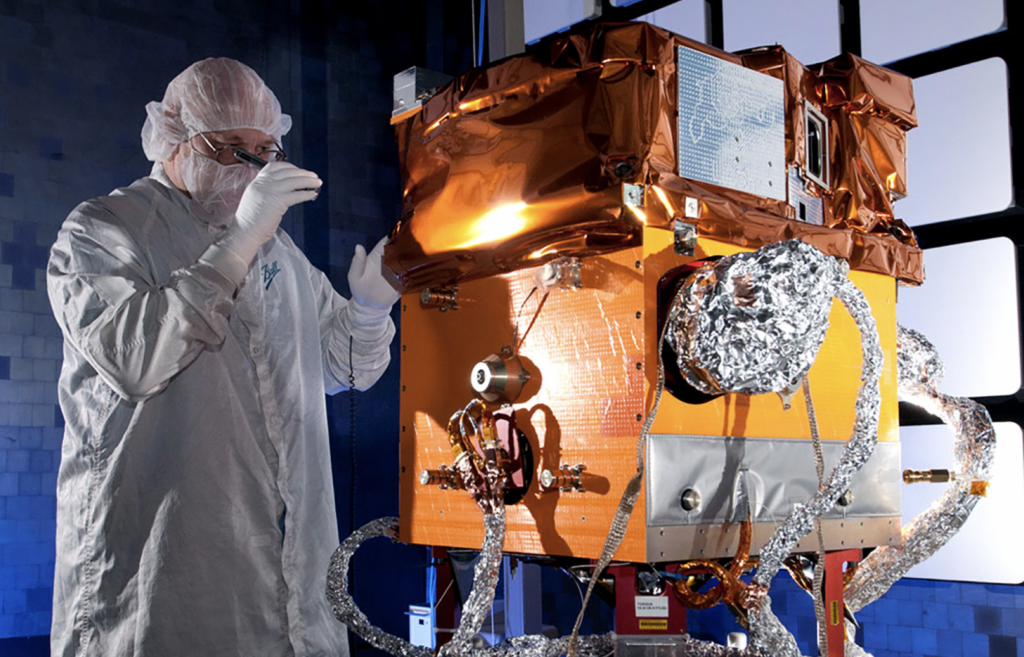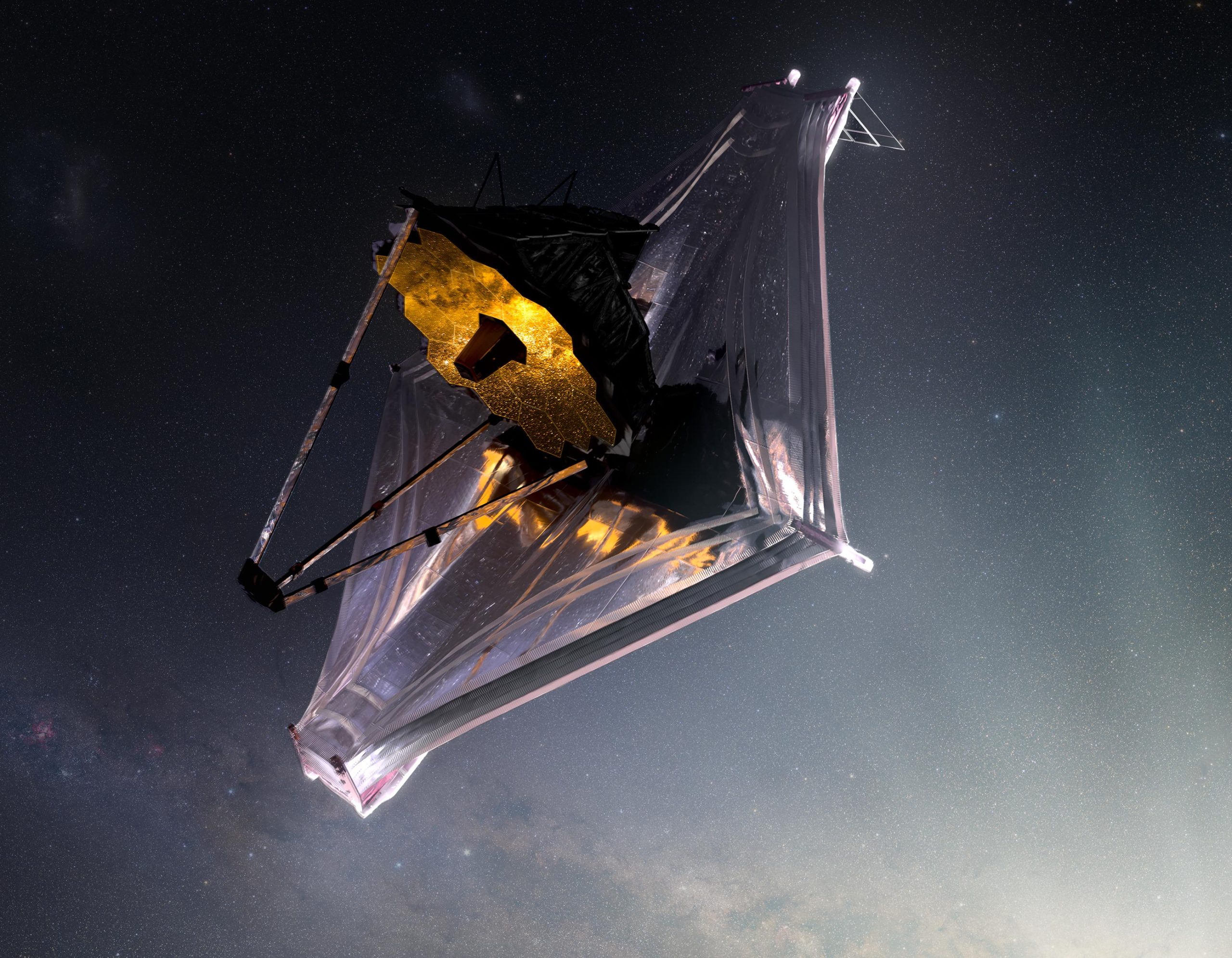WASHINGTON — After its most active year in two decades capped by the launch of the James Webb Space Telescope for NASA, Arianespace is heading into a period of transition in 2022 marked by the introduction of new vehicles and a changing mix of customers.
At a press briefing Jan. 6, Stéphane Israël, chief executive of Arianespace, celebrated the company’s accomplishments in 2021, including 15 launches of Ariane 5, Soyuz and Vega rockets. That was the most missions in one year for the company since 2000, when Arianespace conducted 16 launches of Ariane 4, Ariane 5 and Soyuz rockets.
Arianespace reported revenue of 1.25 billion euros ($1.4 billion) in 2021, an increase of 30% over 2020. The company did not disclose its profitability for the year, but Israël described the year as “break-even.”
The coming year could be even busier, with up to 17 launches on its manifest for 2022. That includes nine Soyuz launches from Baikonur and French Guiana as well as four Ariane 5 launches.
Also scheduled for 2022 is the introduction of the Vega C, the upgraded version of the Vega small launch vehicle, with its first launch planned for the second quarter. That will be followed up to two more Vega C launches later in the year.
Perhaps the most important launch of 2022 for Arianespace will be the inaugural launch of the Ariane 6, currently scheduled for the second half of the year. The core and upper stages of an Ariane 6 are en route to French Guiana for combined tests on the pad there starting in April.
Israël remained optimistic that the first Ariane 6 launch would take place this year despite extended delays in the vehicle’s development, including a recent slip from the second quarter of 2022 to some time in the latter half of the year. “All our energies are mobilized to do so,” he said at the briefing. “Very important milestones are now behind us, and this is why we are confident of making this maiden flight this year.”
Unlike with the introduction of the Ariane 5, which operated in parallel with the Ariane 4 for several years before the Ariane 4’s retirement, there will be little overlap between the Ariane 5 and Ariane 6. There are five Ariane 5 launches remaining, four of which are dual-satellite launches scheduled for this year. All those launches are now fully booked, Israël said, after a contract with the Indian space agency ISRO for launching the GSAT-24 satellite.
Those missions will be followed by the launch of the European Space Agency’s Jupiter Icy Moons Explorer, or JUICE, mission in the first half of 2023 as the final Ariane 5 mission. “We are quite happy that we will end the brilliant life of Ariane 5 with such an ambitious mission for ESA,” he said.
“The overlap between both launchers will be quite limited,” Israël said in a later interview. He projected three Ariane 6 launches in 2023, followed by an “ambitious ramp up” to eight launches in 2024 and 10 to 12 in 2025. “We are prepared for this ramp up due to the high level of demand.”
Changing customers
The sources of demand for those launches are changing. Arianespace had long relied primarily on the commercial sector for business, which remained true in 2021. Israël said at the briefing that, of its 15 launches last year, 11.5 were commercial, a figure that includes an Ariane 5 launch that included one commercial satellite and one French government satellite.
However, he emphasized at the briefing a growing amount of business from European government or “institutional” customers. Arianespace announced Jan. 6 a contract from ESA and the European Union for four launches of Galileo satellites, three on Ariane 6 vehicles and one on a Soyuz. The company also announced a contract to launch two small Earth science satellites for the Italian space agency ASI on Vega launches between 2022 and 2024.
“If you take now our order book, it’s almost perfectly balanced,” he said, with 51% of future launches for institutional customers and 49% for commercial customers.
“We welcome this rebalancing,” he said in the interview, but added he was not certain it was a permanent change. “I expect that, in the coming years, we will have more exposure to the commercial market but, all in all, the more commitment we have from our institutions, the more resilient we will be.”
One reason for the rebalancing has been a drop in commercial geostationary communication satellite orders. After a surge in 2020 to 20 orders, driven primarily by C-band replacement satellites, Israël estimated just 12 orders in 2021. “We were expecting a little more: 15 or 16,” he said.
Constellations may take up some of the slack of a diminished GEO market. “Apart from Starlink, I think this market is open and accessible to Arianespace,” he said, referring to SpaceX’s broadband megaconstellation. He argued the Ariane 6 is well-suited to support constellation launches because of the large volume within the rocket’s payload fairing and its restartable upper stage to support deployments in multiple orbits.
Among the opportunities he cited are OneWeb’s proposed second-generation constellation and Amazon’s Project Kuiper, which acquired the last nine Atlas 5 launches from United Launch Alliance last year. He estimated a market for constellation launches of up to $2 billion a year. “We expect this accessible market to be very dynamic,” he said.
Uncertain Soyuz future
As Arianespace introduces the Ariane 6 and Vega C, the future of Soyuz launches from French Guiana is unclear. While four Soyuz launches from the pad there are scheduled for this year and two next year, Israël raised questions about the use of that facility after 2023.
“We need to have the guarantee of a number of payloads, and it’s not certain because Ariane 6 and Vega C should now take over what Soyuz has delivered,” he said at the briefing. “We’ve had discussions with our Russian partners to see whether there is a business case to go beyond 2023 or not.”
Israël said in the interview that European institutional customers that had been using Soyuz will likely shift to Ariane 6 and Vega C after 2023. “Regarding commercial missions, it is a bit too early to say exactly what will be the market,” he said. Strong demand from constellations could support additional Soyuz sales, but that would be complicated by U.S. regulations that make it increasingly difficult for American companies to use Russian vehicles.
“If we find a business case, we would be very happy to go on,” he said, with a viable business case for continuing Soyuz launches from French Guiana requiring at least two, and preferably three or more, such missions a year.
Israël expected a decision on Soyuz’s future to come by the end of the year. “I think it’s a good topic for the ESA ministerial meeting,” he said, scheduled for November. “It could be that maintaining a capability as a backup for Ariane 6 and Vega C could be part of the business case.”
Lessons from JWST
Arianespace ended 2021 on a high note with the successful launch Dec. 25 of the James Webb Space Telescope. The launch was so accurate, NASA officials said Dec. 29, that the spacecraft will need to use less propellant to adjust its trajectory, allowing that to be used for later stationkeeping. That will extend the mission “significantly” beyond its projected 10-year lifetime, the agency stated.
The extra effort needed to process and launch JWST, such as stringent cleanliness requirements, likely won’t have practical applications for Arianespace, Israël said in the interview. “I’m not sure it will change the way we are going to prepare JUICE,” he said, because that mission is similar to other ESA science missions that Arianespace has previously launched.
Instead, JWST cemented a close partnership between Arianespace and NASA. “What I take from it is the importance of trust and partnership,” he said. “It was absolutely key that NASA was confident in Arianespace. We knew what James Webb was representing for NASA.”
That trust and confidence, he said, will support future potential partnerships between his company and NASA. That includes Mars Sample Return, which will include a European-built orbiter launched on an Ariane 6, as well as support for the Artemis program. ESA is proposing development of a large cargo lunar lander to support Artemis missions that would also be launched on Ariane 6. “I am quite sure it will change the way we are going to work with NASA,” he said.
“This was a journey of 20 years,” he said the planning to launch JWST on Ariane 5. “It has been a long, long journey where NASA, ESA and Arianespace worked together and learned from each partner.”
Note: This article have been indexed to our site. We do not claim legitimacy, ownership or copyright of any of the content above. To see the article at original source Click Here













